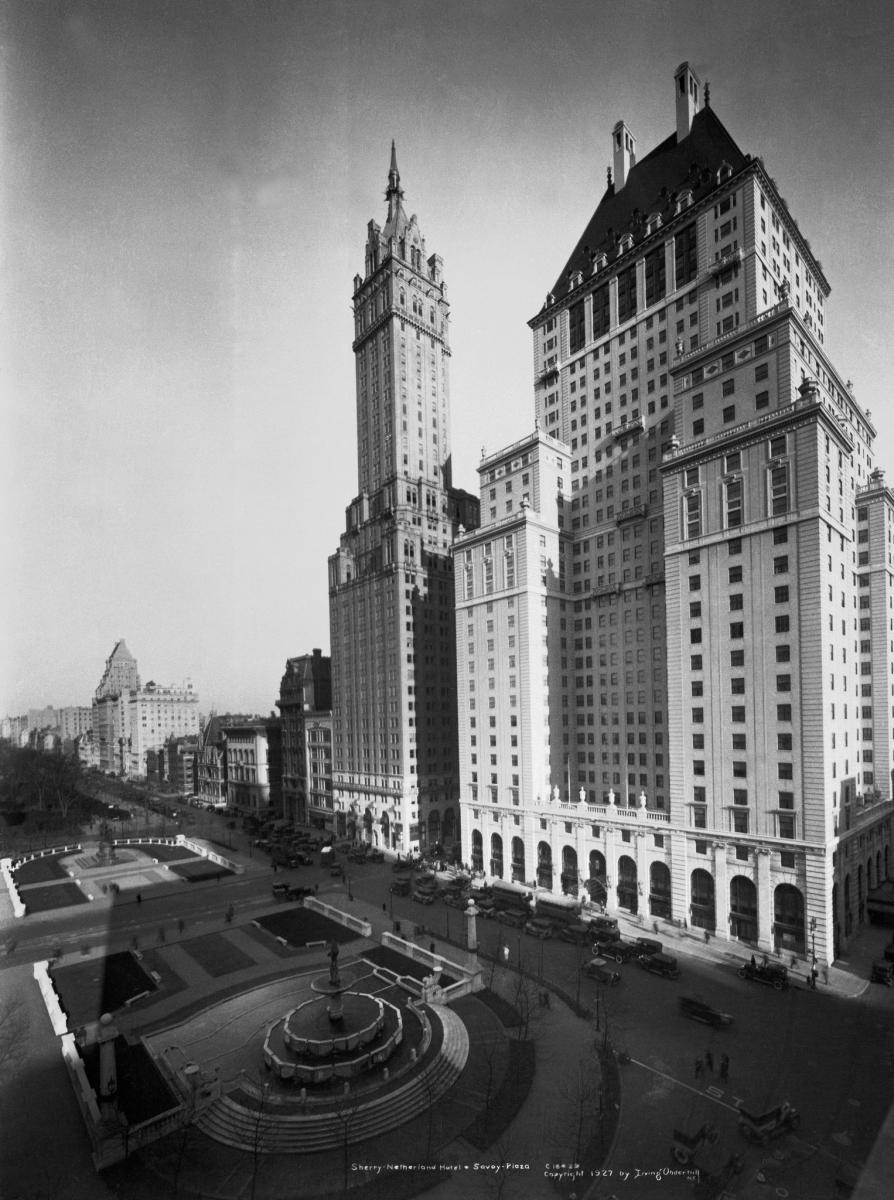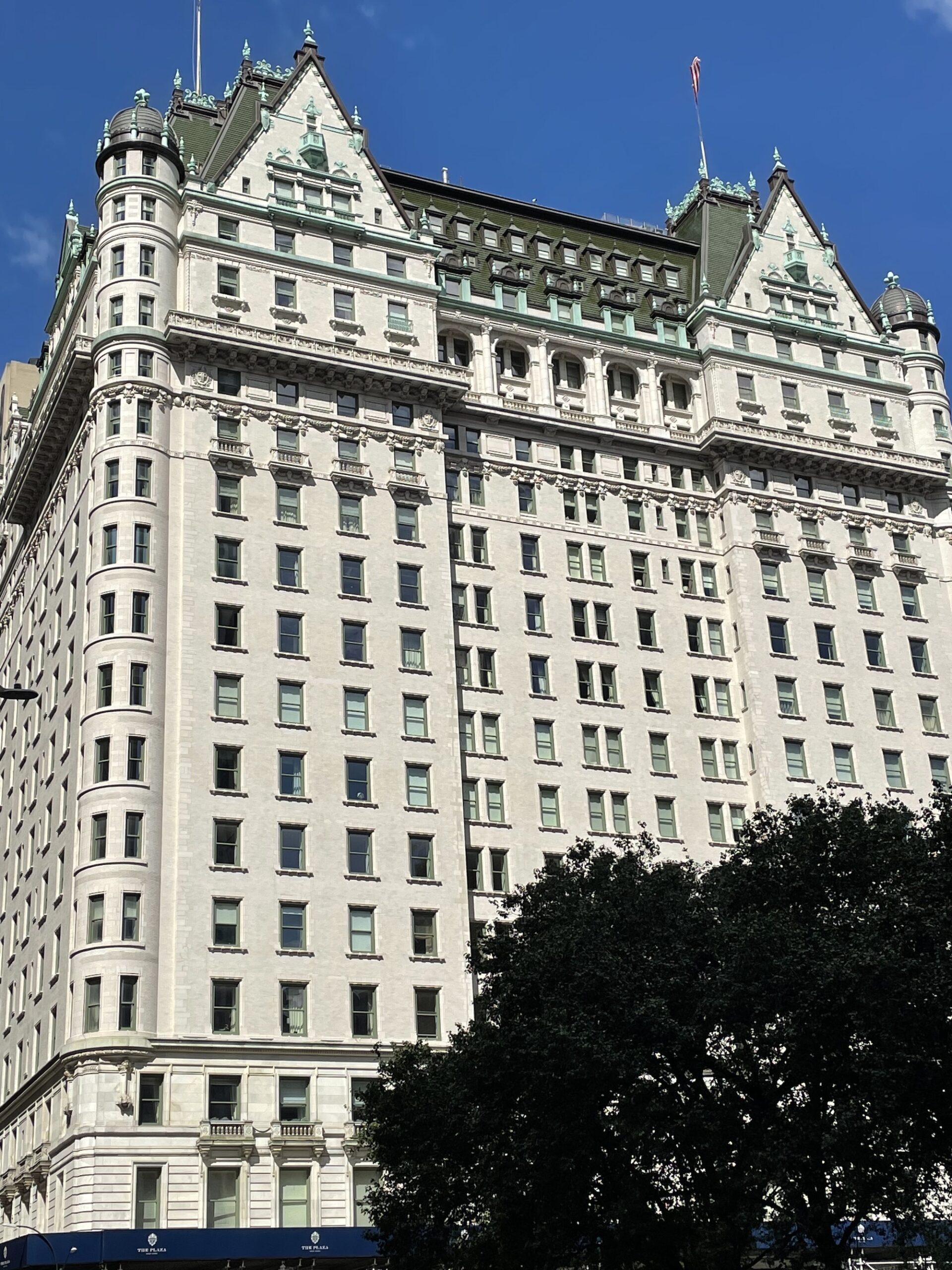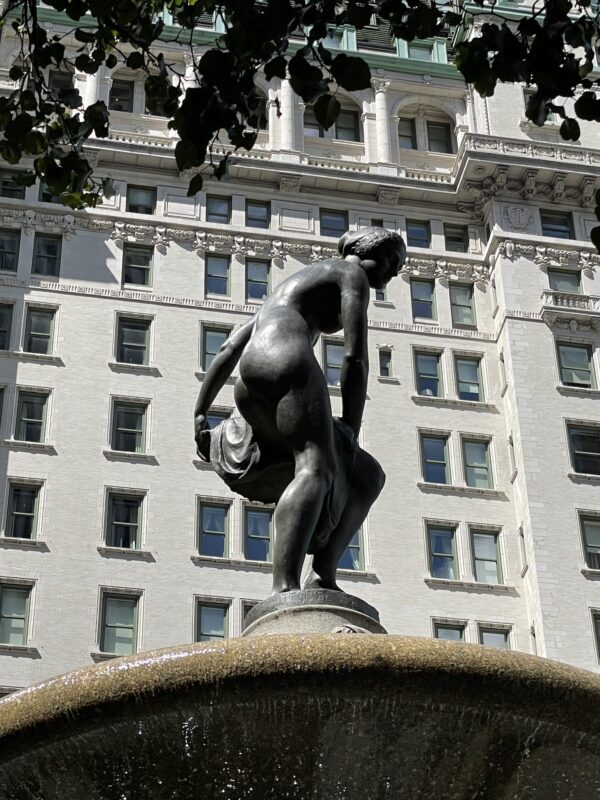Part 2: Part 1 Here
The Great Gatsby “Come Together” with the Beatles
The Plaza perfectly embodied the Jazz age of the Great Gatsby, as it was depicted in the eponymous movie and in the scene of the confrontation between Gatsby–played by Leonardo Di Caprio– and Tom, in one of the suites of the Plaza Hotel. The 1927 magnificent Grand Ballroom of the hotel was inspired by the François I rooms of the Palace of Fontainebleau. It could hold 1,000 guests and soon became the perfect place to host magnificent parties. The most memorable of these was the Black and White Ball that Truman Capote organized at the Plaza in 1966. Among its esteemed attendees were Frank Sinatra, Andy Warhol, James Baldwin, Vincente Minnelli and Richard Avedon.
The Ball was given in honor of the Washington Post editor Katharine Graham, and was a revival of the past splendors of the Gilded Age. But not even Gatsby could attract the size of crowds and craziness that welcomed the Beatles during their stay at the Plaza Hotel in 1964. General Manager Mr. Alphonse Salomone, at first, did not want the Beatles to stay at the hotel and it was only thanks to his daughter, who was a big fan of the band, that he accepted their reservation. The arrival created pandemonium in front of the Plaza, and the story goes that, on their second visit to New York, he refused their reservation, and the Beatles ended up staying at the Warwick Hotel instead.
“North by Northwest”… should have been South by Southeast
This is the intersection of the Plaza Hotel with Central Park with its famous entrance on 59th street where in 1973 Barbara Streisand meets Robert Redford in the movie “The Way We Were,” and where 20 years later Meg Ryan meets her fiancé Bill Pullman in the movie “Sleepless in Seattle.”
The Plaza Hotel with its famous Oak Bar, designed in a German-Renaissance style, is also where Alfred Hitchcock directed the thriller movie that featured the hotel for the first time, in the memorable scene at the bar where Cary Grant gets kidnapped. The Oak Bar had originally opened as a Men’s only bar and it also quickly became known as a very discreet gay meeting place, where wearing a red tie was a coded signal of being gay. It was also the hangout place of Donald Trump’s mentor, evil lawyer Roy Cohn.
Children acting and adults acting up like children
It is incredible to think that what helped propel the Plaza to the world stage was not its famous royal guests or celebrities, but children. One was Eloise, an imaginary bratty little girl who lived at the Plaza, and the other one, an equally bratty kid, Kevin McCallister featured in the movie “Home alone 2” and interpreted by actor Macaulay Culkin.
Kevin cons his way into a room of the Plaza Hotel not unlike Donald Trump who, in 1988, managed to buy the Plaza Hotel and to place his wife Ivana as the General Manager. That lasted up until Donald had one of his tantrums and locked Ivana out of her office when their marriage was over.

While in charge of the most Iconic hotel in New York, “the Donald,” who was still married with Ivana, was also having an affair with Marla. He would later divorce Ivana and marry Marla at a lavish wedding with 1,000 guests at the Plaza Hotel. I imagine it was kind of like “Bride Wars” the movie, which was partially filmed at the Plaza Hotel with Anne Hathaway and rival bride Kate Hudson.
From Wright to wrong
Famous architect Frank Lloyd Wright also lived at the Plaza for six years while building the Guggenheim Museum and changed all the furniture in his apartment suite to his taste. During his time at the Plaza, Frank Lloyd entertained many famous guests including his granddaughter actress Anne Baxter. But most of all he enjoyed the company of Arthur Miller and Marilyn Monroe for whom he was designing a home that was, however, never built.

Although the Plaza had managed to survive almost unscathed through the Great Depression, thanks to its famous wealthy patrons, it had a hard time surviving its future financial trouble. In the 60s it survived an attempt to demolish it. Thanks to a public uproar created from the recent demolition of another iconic hotel, the Savoy-Plaza, which stood just on the other side of the square and that was sadly destroyed to make room for the mammoth GM skyscraper, the Plaza was saved.
Ernest Hemingway suggested that F. Scott Fitzgerald “should donate his liver to Princeton University and his heart to the Plaza,” but Scott Fitzgerald, if alive, would have suffered from a broken heart and would have had to donate both organs to Princeton. The Plaza Hotel barely survived Trump’s bankruptcy in 1995 and, after many changes in ownership throughout its history (Conrad Hilton, Westin, Trump, the Saudi Prince Alwaleed) it lost its battle and in 2005 was closed for “renovation.” Sadly, it was sold and converted into private condos with only a small part of the building reopening as a hotel, while the Oak Bar has never reopened.

The New York Times reported a ghostly empty building where apartments were sold on a few occasions as an investment to a mix of shady owners. The days of elegance and sophisticated clients such as Marlene Dietrich, Truman Capote, Lauren Bacall and Liza Minnelli are long gone, replaced by the brother of the dictator of Kazakhstan, the Prime Minister of Vanuatu that pocketed the money destined to his islands after a hurricane, and the Israeli diamond tycoon who was busted for money laundering and fraud.
The Plaza Hotel has lost its place in the life of the city and tarnished and betrayed its history.
Aside from the landmarked exterior, the Lobby, the Palm Court and the Oak Bar that survived intact, the basement became a food court and every original precious piece of the hotel–from its fireplaces to the door knobs– were sold to Sotheby’s and later replaced with “genetically modified” copies.

Thankfully the oldest permanent resident of the Plaza Hotel, checked in in 1932 and died in 1960 at the age of 103, and did not witness the sad end of an era.
Even the Goddess Pomona could not stop these events from happening. Her feminist muse Audrey Munson had a tragic life and was interned in an insane asylum at the age of 40. However, she lived until the age of 105 and died in 1996. The gilded age of the Plaza Hotel is now gone and replaced by the “Glitzy Age.” Its glamorous clientele of the Vanderbilt, and the Gould, has been replaced by over-accessorized and botoxed Matryoskas and glittering Saudis. But Pomona is still with us and she looks out proudly over beautiful Grand Army Plaza and at all that is still left of our history hoping that, this time, we will fight to preserve it.











